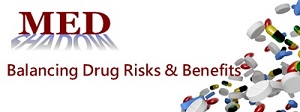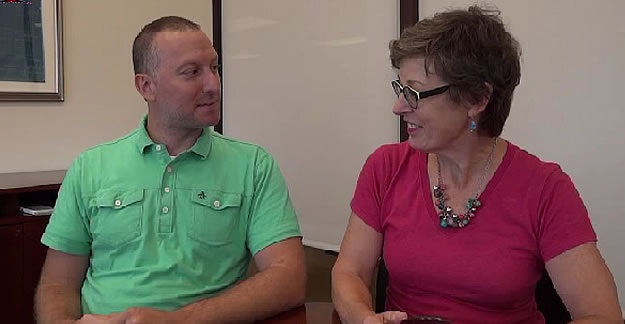 Special to the Philanthropy Journal
Special to the Philanthropy Journal
By Julie Livingston, Communications Director, MedShadow Foundation
It’s crowded and cluttered out there in the media space, which doesn’t make it easy for the more than 1.5 million nonprofit organizations registered in the U.S. to attract donors, sponsors, employees, volunteers and potential partners. Still, nonprofits’ perceived inherent credibility and not-for profit orientation, can be the key to generating mainstream media coverage versus for-profit companies. So, what can an under-the-radar nonprofit do to outshine their competitors and attract the attention of key stakeholders who matter? Consistent, professional communication is the key, because no matter how noble your organization is, if it’s not telling its story consistently and strategically, it will go unnoticed. Public relations can help nonprofits to leverage their expertise and communicate their messages effectively and consistently, creating fans and followers, and igniting interest among donors, sponsors, partners, employees and volunteers.
 MedShadow Foundation provides a compelling example of how over time, public relations can build brand recognition while driving website and social media traffic. With limited resources, we are constantly looking for cost-effective opportunities where MedShadow can shine. As indicated below, public relations works best as a long-term marketing strategy, interwoven with search-engine-optimization and other marketing functions.
MedShadow Foundation provides a compelling example of how over time, public relations can build brand recognition while driving website and social media traffic. With limited resources, we are constantly looking for cost-effective opportunities where MedShadow can shine. As indicated below, public relations works best as a long-term marketing strategy, interwoven with search-engine-optimization and other marketing functions.
MedShadow is an online nonprofit founded in 2012 by Suzanne Robotti, a health advocate who sought to increase the discussion between physicians and patients about the side effects, risks and benefits of medicine, both over-the-counter and prescription. The site has in-depth feature articles about side effects and employs leading medical and science journalists to write stories on topics such as Next-Gen Blood Thinners – What’s Right for You? and Pros and Cons of Antibiotics Robotti started MedShadow through a private family foundation, and in 2014, we started a public relations plan to attract media attention – there was no news coverage at the time – as a means of increasing website visitors and developing a fan base.
Laying the Groundwork for SEO
According to the 2016 Nonprofit Communications Trends Report, organizations like MedShadow are using every opportunity to optimize the ways they communicate across a variety of communications platforms and doing it more often. With limited resources, our strategy was to identify MedShadow as the leading resource on side effects of medicine and establish Su Robotti, founder/president, as a subject matter expert. We were fortunate in that Su is a highly articulate spokesperson, conversant on many of the important topics media was interested in such as ADHD, statins and NSAIDS.
Working closely with our web production team, we created on-point messaging to underscore MedShadow’s thought leadership and used Buffer to schedule a regular flow of content on “hot topics” across Facebook, Google+ and Twitter – baseline platforms for reaching the majority of stakeholders (including the media; it’s where reporters surf for ideas). A YouTube channel was set up with original videos as well as a LinkedIn page. Additional visual platforms like Flickr, Instagram, Periscope and Pinterest are also powerful in forming emotional connections to audiences based on where they congregate on social media, although these are not critical for MedShadow.
Building Online Traction
It should be noted that in the summer of 2013, one year after its formation, MedShadow had 660 unique monthly visitors. In the same period the following year, traffic rose to 10,330 and in the summer of 2015, there were 31,373 unique monthly visitors to the site. MedShadow’s only advertising comes from a Google Ad grant (every NFP should apply for it) that allots us a monthly ad allowance on Google. The ads are seldom on page 1 of a search, but we find traffic pulling from ads further back on pages 4, 5 or 6 of Google searches.
Take a Media Friendly Position
Early on in the public relations effort, we worked on positioning MedShadow as a media-friendly organization. This included creating an online press room making it easy for the press to find basic information materials available such as Robotti’s bio, organizational backgrounder and Frequently Asked Questions (FAQ) in addition to media contact information for setting up interviews.
To increase the media’s awareness of MedShadow, we developed a targeted media database as well as our own research. We began publishing a monthly newsletter using an email marketing service. Using a streamlined format, the newsletter often includes a theme, often tied into a national health celebration – of interest to media – such as “November is Diabetes Awareness Month” and contains 2-3 article highlights with hyperlinks. Tracking results of the newsletter informs us of specific media interest which has increased incrementally over the past two years. It’s now a common occurrence to see that top tier media outlets such as the Wall Street Journal, Associated Press, Buzzfeed, Greatist, MindBodyGreen and more have opened the newsletter or reached out for more information or to schedule an interview.
In an effort to extend the organization’s’ reach, we pitched media outlets where we identified opportunities where MedShadow content could fill a void in coverage on side effects. These included consumer lifestyle publications- both print and online. Over time, we developed content contribution opportuntiies with well-known, respected health sites including Healthywomen.org (450,000 unique visitors per month) and EmpowHer.com (700,000 unique visitors per month). These were big “wins” as they further established MedShadow’s credibility as a resource. In some cases, we provided original, never-before-published content but also offered co-posts of existing MedShadow articles on hot topics such as drugs and pregnancy. When giving permission for the media to co-post, we tried to provide customized trackable links so that we could later identify which ones were effectively in delivering the most web traffic.
Over time, we leveraged this initial coverage and are now contributing original content as well as co posting to top tier outlets, among them, Everyday Health (more than 4,000,000 unique visitors per month) and Next Avenue (640,000 unique visitors per month).
Leverage the Power of Video
MedShadow has come a long way since implementing the public relations program. The site now attracts more than 115,000 unique visitors per month. With that, we are broadening our communications outreach and increasingly using video because of its shareability across social media. We recently launched MedShadow TV, a video series produced inexpensively using in-house talent that features in-depth, thought provoking conversations on side effects. In each segment, founder Su Robotti and Jonathan Block, content manager, discuss a particular topic that ties back to a feature article such as Seniors and Medicines/The Beers Criteria; Risks of Insomnia Drugs, Right to Try Laws and Results of Marijuana Research. The search for new promotional opportunities, partners and media platforms is ongoing and are increasingly excited about exploring other visual channels where we can showcase MedShadow’s thought leadership in new and inventive ways.
Julie Livingston is president, WantLeverage Communications, a public relations and business development consultancy that works with nonprofits to raise their visibility in the media and among key stakeholders. Contact her at julie@wantleverage.com.





